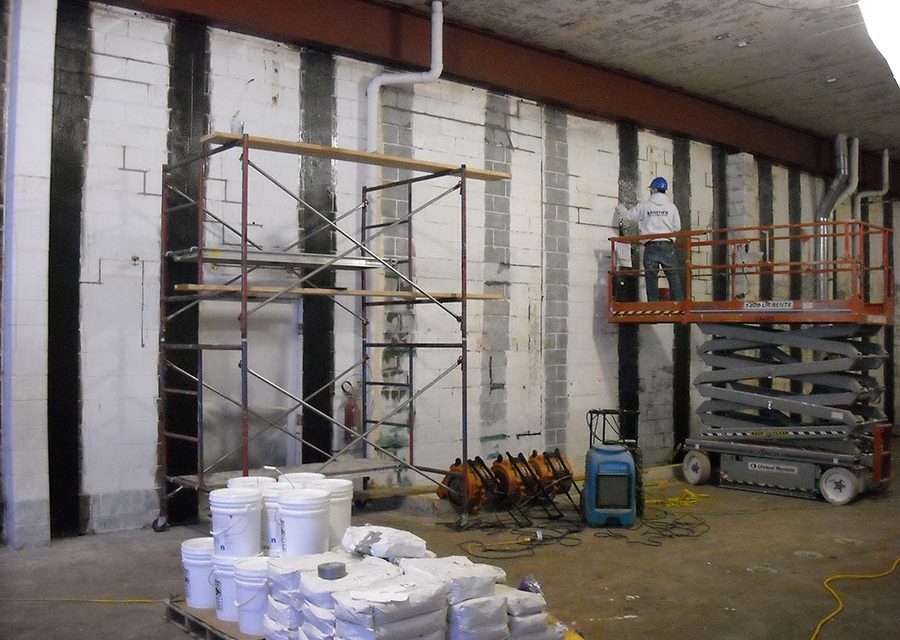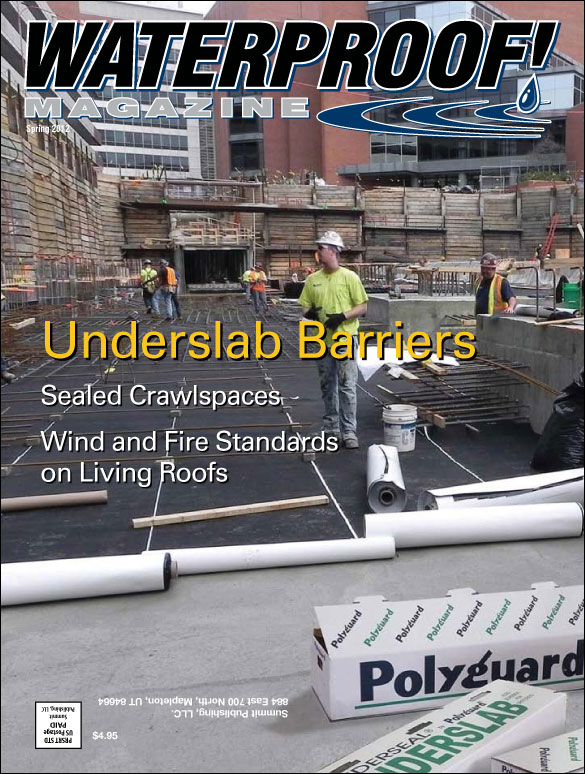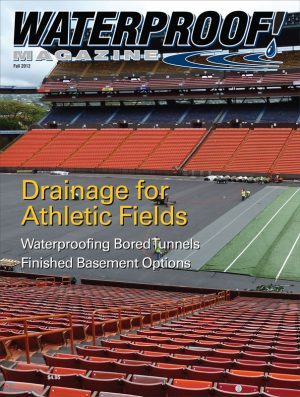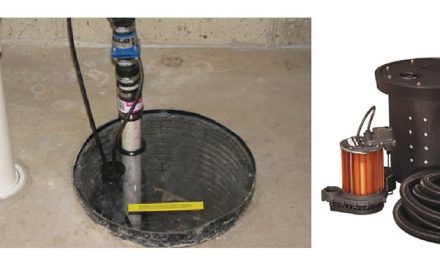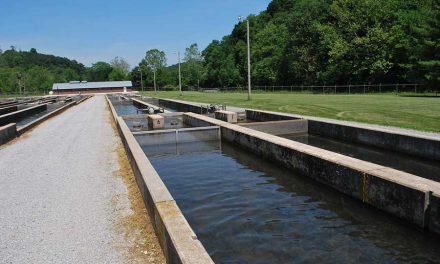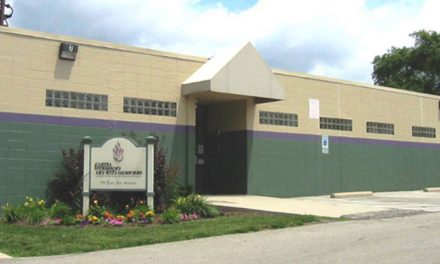by Melissa Morton
As the housing market continues to struggle, a number of residential waterproofers are finding success by adding commercial jobs to their portfolios.
While the commercial waterproofing market offers a larger client base and revenue stream, it is not without risk and substantial challenges.
“The work itself is fundamentally the same,” says Chris Brown of Rescon Basement Solutions in North Reading, Mass. “However, the landscape of the two markets is very different. These differences can wreak havoc on a residential market that is not prepared to venture into the world of commercial waterproofing projects.”
Contractors who have made the shift say the greatest challenge isn’t in the technical aspect of the work, but in the scale, scheduling, and financial management these jobs demand.
Insurance
Larger projects come with greater risks, and most waterproofers find that their insurance coverage needs a boost before tackling commercial work.
Brandon Smith of Smith Waterproofing, in Almont, Mich., explains, “When something goes wrong on a residential project most companies can cover it. In commercial work, one bad project is enough to take them out of business.”
Better coverage is not just a good idea. It’s usually a requirement. The general contractor or project owner typically won’t consider a company with inadequate policies.
Most residential waterproofing companies already have general liability and worker’s compensation insurance. Brown says you will probably need to raise the limits on those policies and add an “umbrella policy” to fill potential gaps in the coverage.
For example, a company has auto coverage of $500,000 and general liability coverage of $1,000,000. If they added a $1,000,000 umbrella policy, in essence, they’d have $1,500,000 in auto coverage and $2,000,000 in general liability coverage.
“Get a solid insurance agent that has experience working with commercial contractors,” says Brown. He suggests calling and asking a local commercial contractor who their insurance agent is. If this isn’t an option, the local Associated General Contractors (AGC) chapter should have suggestions.
Liability is somewhat different in the commercial sector. In residential work, the waterproofer picks the product, warranties the entire job, and takes on all the liability. In commercial work, the engineer specifies the product and takes on the liability that it will work in that application. In most cases, the waterproofer will only be liable for the proper installation and labor aspects of the job.
Smith says he has worked with engineers to use a different product than the one specified. He says if you suggest a different product and the engineer approves it, you may take on more liability if something goes wrong. Smith suggests working with the manufacturer to make sure the product will work for the application.
In any case, the proper insurance is essential to cover liabilities in case something goes wrong.
Payment Schedules
Residential waterproofing con-tractors are used to seeing a 20% profit margin on a $10,000 job. On a commercial job, the profit margins will be slightly lower (more like 10-15%), and take much longer to come in.
Brown says the old adage is true: It takes money to make money. “Like all residential contractors you may have that rare 30-day receivable that drives you crazy each month when you look at the A/R report,” Brown says. “If this is something that bugs you to no end then the commercial waterproofing market is not for you.”
In the commercial market payment terms of 45-60 days are normal, and 90 days are not unheard of. Needless to say, this can substantially impact a company’s cash flow if they are not properly prepared to fund overhead and payroll while waiting for the payment.
The answer to this problem is a solid line of credit with your bank. In most cases, the bank will provide a line of credit that reflects the past 12 months’ A/R report. Unfortunately, this will likely be inadequate for supplying the amount of cash you need to cover payroll and overhead expenses when you first take your company commercial.
Make sure you are well capitalized before entering into any commercial contracts. Brown recommends having enough cash in place to cover the company’s payroll and overhead expenses for at least 60 days. “This will require a clear understanding of these expenses,” he says.
“If you don’t have a clear and concise handle on the expenses, don’t venture into the commercial market,” he adds. “You are not ready.”
Smith, in Michigan, says it is not uncommon to go a full year before he gets full payment on a job. In his experience, some commercial jobs pay partial payment at the 45-60 day mark and hold a retainer until the job is 100% completed. “In some cases that means you might be waiting five years until you get paid the full amount,” says Smith.
Staffing and Paperwork
For a hands-on owner who is used to going out on every call, making every inspection, and writing up every quote, the transition to commercial may be hard. “There is no way one person can wear all the hats in commercial and do a good job,” says Smith. “You need to get a good project manager and team. You can’t do it all yourself.”
Smith’s company has a person on staff dedicated to finding and processing commercial leads. It takes more time to bid these projects and definitely more paperwork once you win a bid. Your crew and office personnel need to be on board and prepared for some changes in their workloads.
Smith’s remedial waterproofing company eased into commercial work over the past 30 years. They started out doing remedial waterproofing and foundation repair work for apartment complexes in 1970. “Apartment complexes are a perfect way to get into commercial work,” says Smith. “The scope of the work is the same as residential, but you are introduced to the paperwork—one of the biggest challenges of commercial work.”
“That first 2,000 page contract can be quite a shock,” Smith says. To better prepare himself for commercial work, Smith took contract and blueprint reading classes at his local community college.
The company began pursuing commercial work aggressively about eight years ago and while it fluctuated over the years, the commercial side of the business has surpassed residential for the past two years. Smith Waterproofing now does 70% commercial work.
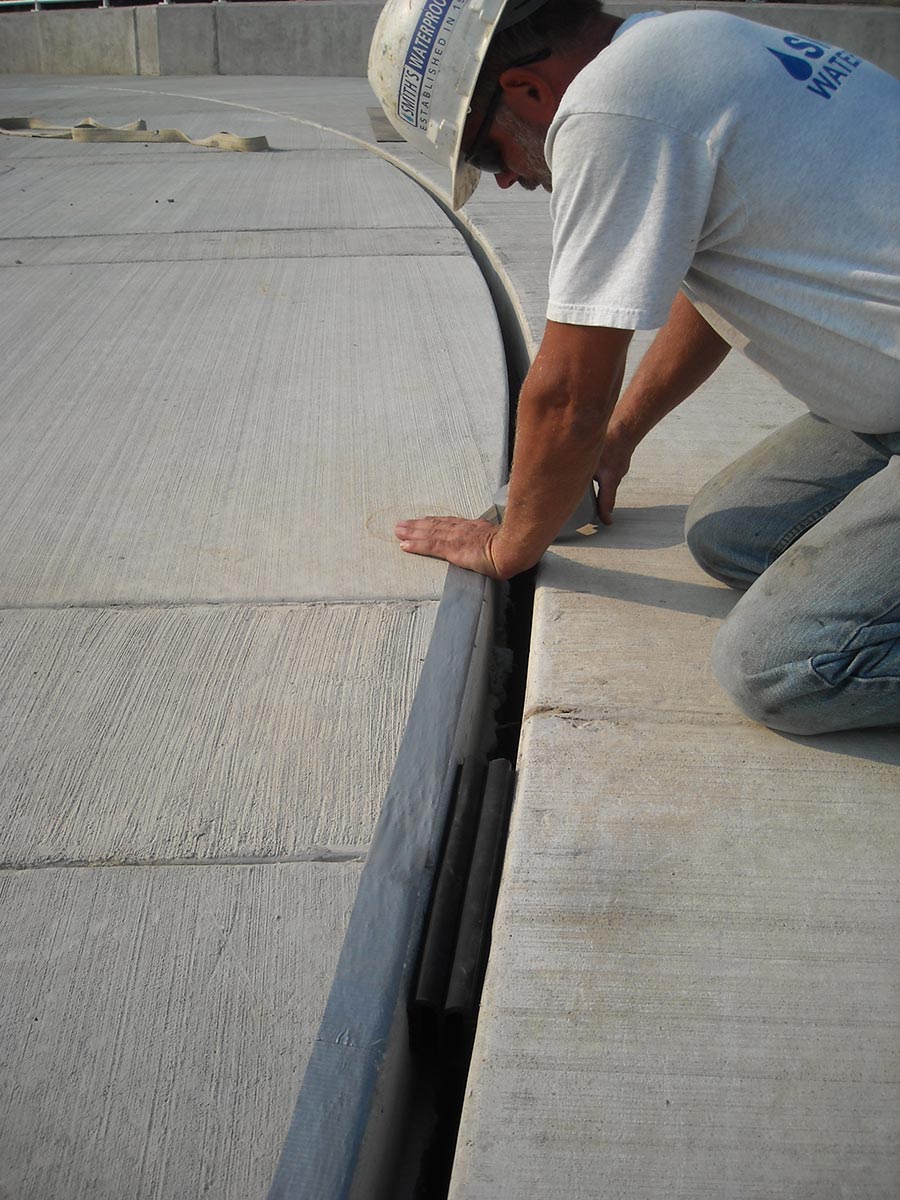
Making the Shift
Too much, too fast can be the demise of residential company moving into commercial. “Definitely start out slow with smaller projects,” Smith says. “Don’t bite off more than you can chew.”
Seal It Waterproofing, in Calgary, Alberta, Canada is one company that successfully made the transition by working up to progressively bigger projects. Owner Jason Whitfield began as a builder of custom concrete homes and started Seal It Waterproofing as a division of the larger company. When he discovered Epro Waterproofing, he bought a pump and started waterproofing the large custom concrete homes they were building. They worked on large complicated foundations, some of which were upwards of 15,000 square feet but they were still considered residential.
In 2007, the homebuilding division slowed down but the waterproofing side of the business was still going strong. They soon landed their first commercial waterproofing job doing the blindside waterproofing on a new 3-story parking garage. It was an $80,000 contract waterproofing 30,000 square feet.
That project (and the people they worked with) led them to the next two commercial waterproofing projects: an 11,000-sq.-ft. gas line barrier for a new health facility and a contract to waterproof decks over living spaces for an apartment complex. These three jobs—the blindside waterproofing on the parkade, the gas barrier, and the deck over living space—prepared them for their next bid—waterproofing 800,000 sq. ft. of underground light rail station and tunnel for the West Light Rail Transit project in Calgary.
“It was a huge jump,” says Whitfield. “But our previous commercial jobs taught us the techniques we needed to successfully do this job. The gas line taught us how to waterproof the base of the tunnel, the blindside waterproofing job taught us what we needed to know to do the walls of the tunnel and the decking jobs helped us know how to do the roofing system.” He partnered with Michael Downey of Mike Downey Contractors, Wichita, Kansas, who was the main waterproofing contractor on the project.
Now 18 months into the project, they have already finished two-thirds of the job. They’ll start back up in May 2012 to finish the last 30,000 square feet.
Whitfield says project admin-istration is one of the biggest challenges of commercial work. “I spend most of my time in meetings,” he says. On the West LRT job he dealt with eight different superintendents and went to eight different meetings. “I had to put someone else in charge of the residential side of the business because there wasn’t enough time to do both,” he says.
Finding Leads
In commercial work , the engineers typically specify the products. (This is true regardless of whether it’s new construction or remedial work.) If you’re on good terms with your suppliers, they may be a good source for commercial leads.
Often, an engineer will contact the manufacturer first and ask if they know any contractors in the area who could handle the job. Smith has gotten several of his commercial leads that way.
Build a solid reputation by doing good work. Smith says that in commercial and government work everyone talks to each other. “Engineers and general contractors have good memories,” Smith says. “They will never forget their experience with you. Whether you did a good job or a bad job they never forget and they tell their colleagues.”
He says you can get more bids just by building your reputation among the engineer and general contractor community.
Government and commercial bids are also available online. Some com-panies sell leads to bid on commercial projects. Typically, government projects are listed on the specific township, city or state websites.
“Commercial projects are com-petitive,” Smith says. “Bidding is a balancing act. You won’t get everything you bid on but be prepared as if you will win every bid. You don’t want to bid on too many job unless you know you can handle the work if you win the bids.”
On the Jobsite
Waterproofers who have made the switch say the actual work is the same in residential as in commercial work, but on a much grander scale. A typical residential crack injection job is about 8-16 linear feet. A commercial job is commonly 2,500 linear feet. “The way you fill a crack doesn’t change,” Smith says. “It just takes a lot more material and you have to prepare for that.”
Whitfield says on a commercial job you have to get used to working around different sub-trades. “There is a lot more activity on a commercial job,” says Whitfield. “Sometimes there is equipment in the way. You have to deal with different safety concerns to keep your crews and everyone else on the jobsite safe.”
Schedules may be tighter, too. Smith remembers one challenging project when they had to shut down a 24-hour food processing plant to get the work completed. The owners wanted the plant back up and running as soon as possible, so Smith’s crew worked long hours through the weekends to get the job done. “You are always working on a deadline in commercial work,” he says, “and you usually get fined if you are late.”
He cites a highway project beginning shortly with the Department of Transportation as an extreme example. “They have penalties of $5,000 for every 15 minutes past your deadline.”
Commercial work is definitely challenging. “It is not easy,” says Smith. “But I like the challenges of commercial work. I find it rewarding to tackle a new and different project.”
Spring 2012 Back Issue
$4.95
Underslab Barriers: Does Millage Matter?
Wind and Fire Standards for Living Roofs:
Taking Your Business Commercial
Sealed Crawlspaces: Concrete vs. Plastics
AVAILABLE AS DIGITAL DOWNLOAD ONLY
Description
Description
Underslab Barriers: Does Millage Matter?
The thickness of an underslab moisture barrier is frequently used as a gauge of performance. But other factors, such as tensile stregnth and puncture resistance are just as important.
Wind and Fire Standards for Living Roofs:
By Kelly Luckett
New standards define what’s needed to keep living roofs safe from wind damage, and prevent the spread of fires. They also prove that green roofs have overcome the final hurdle for acceptance by the design community.
Taking Your Business Commercial
By Melissa Morton
Project size, opportunities, ad profits are all larger in the commercial sector, but so are the risks. Three contractors who have made the leap successfully discuss what you need to know before your residential waterproofing business starts bidding on commercial work.
Sealed Crawlspaces: Concrete vs. Plastics
The new trend in basements is to seal crawlspaces from outside air and soil moisture. The two most popular methods to seal the floor each have unique considerations that if not considered may aggravate moisture problems.
Additional Info
Additional information
| Magazine Format | Digital Download Magazine, Print Mailed Magazine |
|---|

